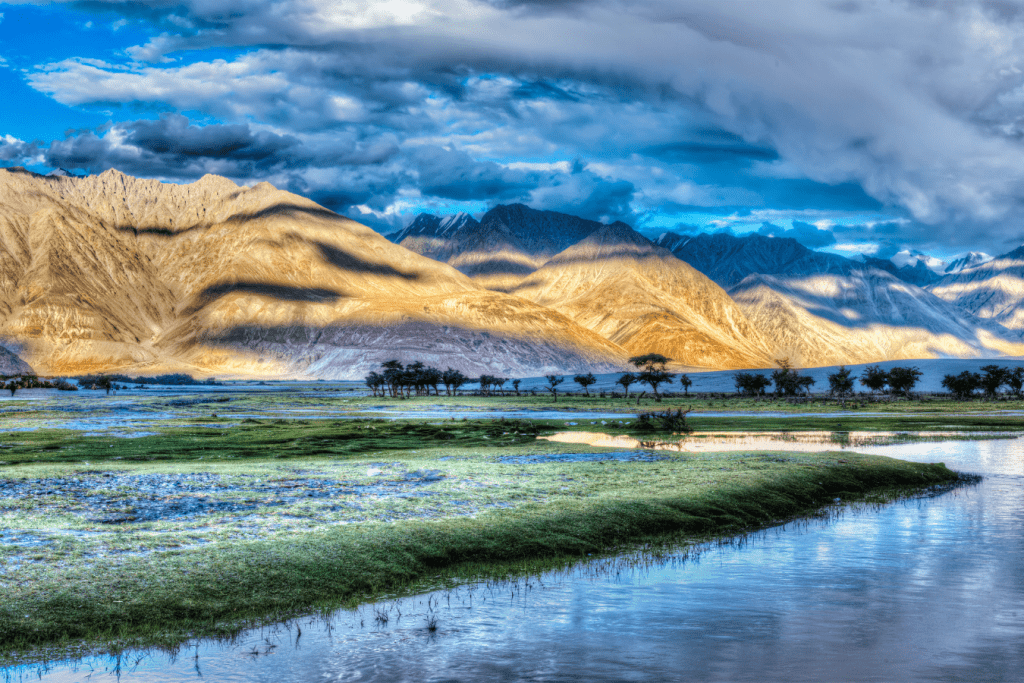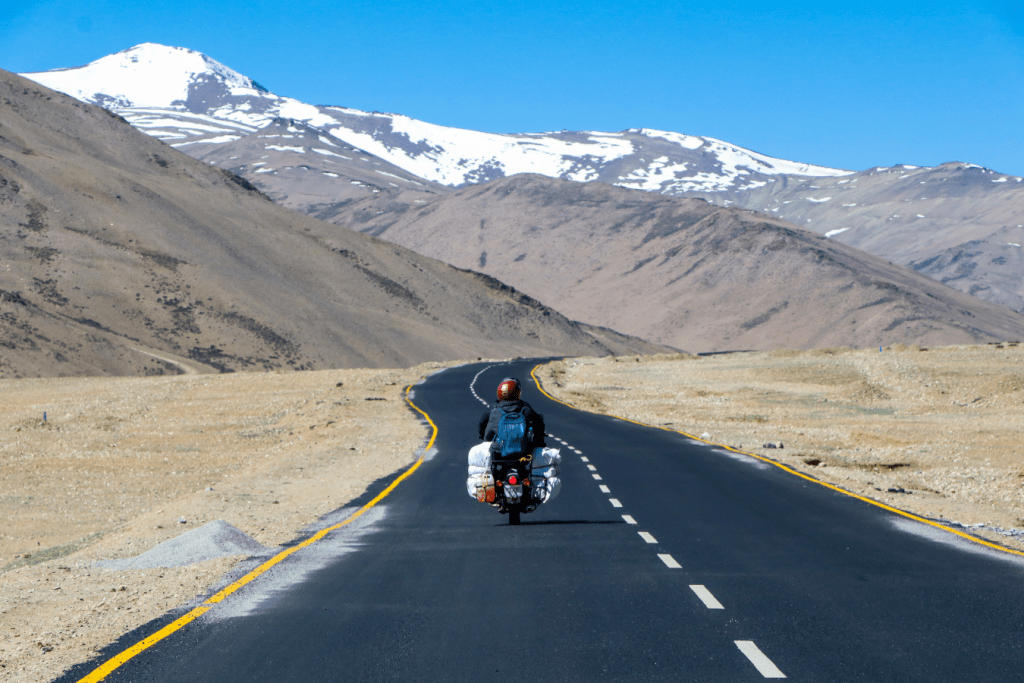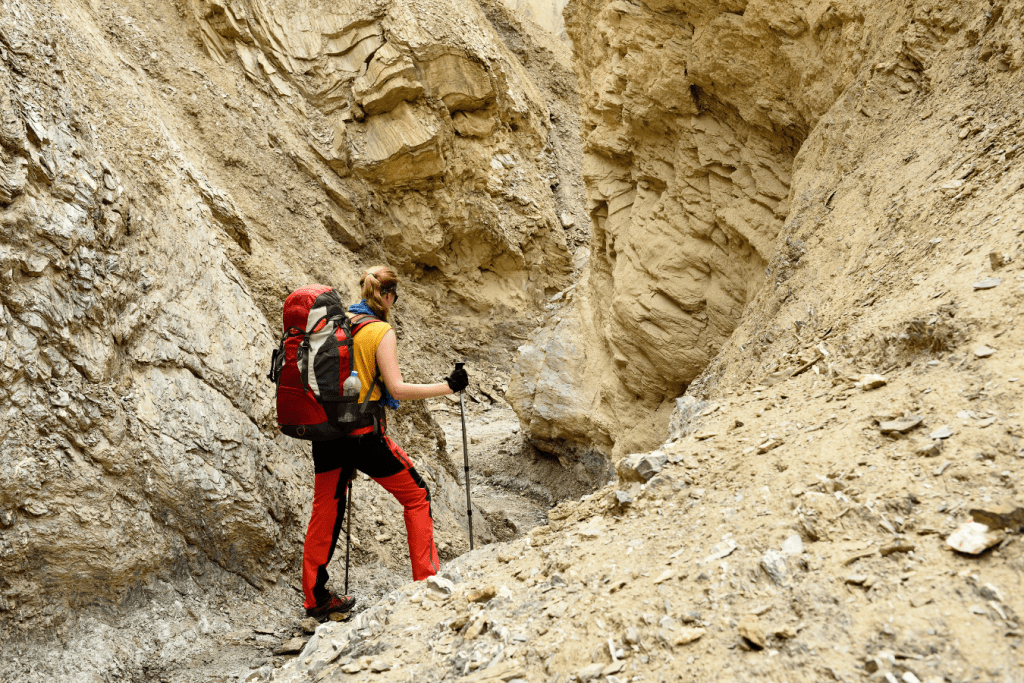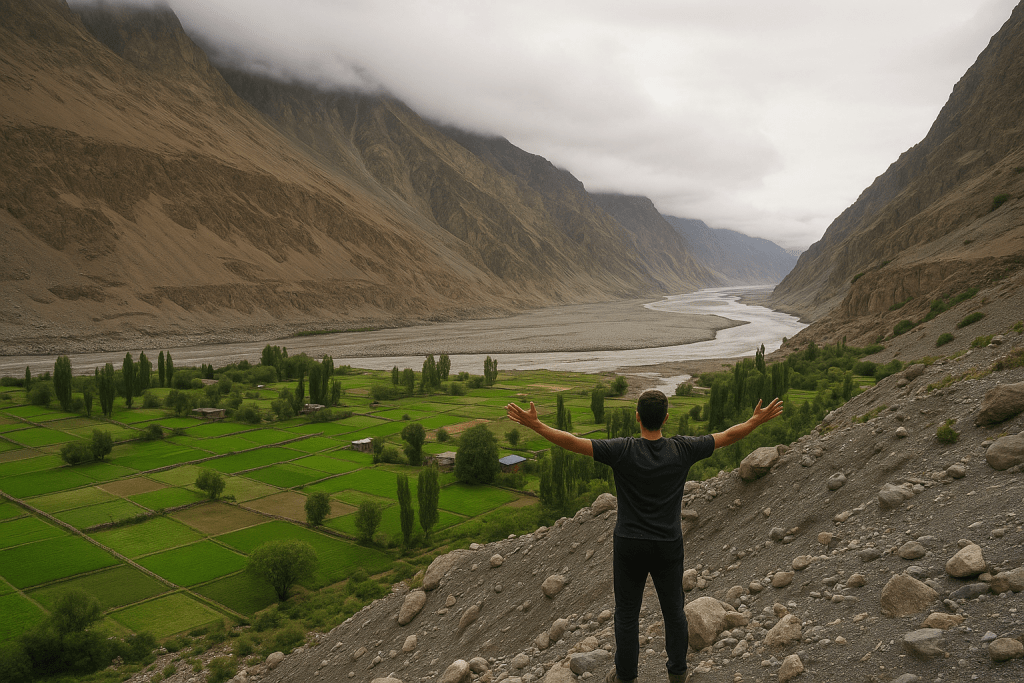Planning a trip to Ladakh takes more thought than a regular holiday. Ladakh is a unique high-altitude region where the air is thin and oxygen levels are low, especially for those coming from sea-level areas. The weather is dry and often cold, which can be challenging if you’re not ready for it.That’s why having a smart and well-prepared Ladakh travel plan is so important.

This includes:
- Giving your body time to adjust to the height
- Knowing the right time to travel
- Carrying the correct gear and clothes
- Understanding local rules and travel permits
With the right planning, you can avoid health issues and travel delays — and focus on enjoying the beauty, peace, and adventure that Ladakh has to offer.
1. Why Travel to Ladakh?
Ladakh is one of the most beautiful and also unique places in India. Surrounded by the huge Himalayas and Karakoram mountains, it feels like a different world — full of wide-open landscapes, quiet deserts, colorful monasteries, and deep blue lakes.
This is not just a place for sightseeing — it’s a place to feel peace, enjoy adventure, and connect with nature. Whether you love road trips, mountain views, trekking, photography, or learning about new cultures, Ladakh has something special for you.

But there’s one thing you should know — Ladakh is a high-altitude area with thin air, cold weather, and basic facilities in many places. That’s why it’s important to plan your Ladakh trip properly, so you can travel safely and enjoy every moment.
2. Start with Basic Research
Before anything else, spend some time understanding Ladakh’s geography, seasons, and conditions. This helps you choose the best time to visit and prevents surprises.
Best Time to Visit Ladakh
Ladakh’s weather changes a lot during the year. Here’s the easiest way to know when to go:
- April to June: This is the best time to visit. The snow melts, roads open, and the weather is nice.
- July to August: You can visit, but sometimes there are landslides because of rain nearby.
- September to October: Not many tourists come now. The sky is clear, and it’s good for taking pictures. It starts getting cold.
- November to March: It’s very cold and snowy. Most roads are closed. Only go if you are ready for a tough winter.
Know the Altitude
Leh, the main town, sits at over 11,000 feet above sea level. Many other places go much higher. The thin air and lower oxygen can lead to altitude sickness. So, understanding acclimatization (discussed later) is key.

Check for Current Conditions
Always check
- Government travel advisories
- Weather updates
- Army activity in border areas (especially around Pangong, Nubra, and Tso Moriri)
3. Create a Simple and Effective Itinerary
Now let’s map out a practical itinerary that allows time for rest, exploration, and adventure, without overwhelming your body.
7-Day Sample Ladakh Itinerary
| Day | Plan | Stay | Notes |
| Day 1 | Arrive in Leh, rest | Leh | Full rest day for acclimatization |
| Day 2 | Local sightseeing (Leh Palace, Shanti Stupa, Hall of Fame) | Leh | Easy day, low exertion |
| Day 3 | Drive to Nubra Valley via Khardung La | Nubra | Inner Line Permit required |
| Day 4 | Explore Nubra, return to Leh | Leh | Visit Hunder sand dunes and Diskit Monastery |
| Day 5 | Drive to Pangong Lake | Pangong | Overnight stay near lake, cold at night |
| Day 6 | Return to Leh | Leh | Long drive, relax on arrival |
| Day 7 | Fly back home | — | Morning flights recommended |
This itinerary helps with gradual altitude gain and includes top highlights without rushing.
4. Permits Needed
Some areas in Ladakh are near the border, so you must get special permission to visit them.
- Inner Line Permit (ILP): If you are an Indian traveler and want to visit places like Nubra Valley, Pangong Lake, or Tso Moriri, you need this permit.
- Protected Area Permit (PAP): If you are a foreign traveler, you must get this permit through a registered travel agent.
You can apply for the ILP online on the Leh District website or get it at the District Collector’s office in Leh. Always carry several photocopies of your permit because you will need to show them at army checkpoints along the way.
Tip: To plan your trip easier, you can choose a Ladakh travel package from a tour company. They will handle all the permits, transportation, and accommodation for you. This way, so you don’t have to worry about paperwork or planning every detail, and you can focus on enjoying your trip.
5. Planning Your Way to Ladakh
Decide how you want to get to Ladakh — by flight, car, or bike. Flying to Leh airport is the fastest and easiest option.
If you prefer travel by road, plan your journey with rest stops to help your body get used to the altitude of Ladakh. You can drive to Leh from either Manali or Srinagar. Remember, these roads close in winter because of snow.
When you arrive in Ladakh, you can use local taxis for sightseeing since taxis from outside are not allowed. If you want to explore on a bike, it’s safer to travel in a group or have a backup jeep with you. The terrain can be tough, and services are limited.
6. Accommodation Choices

Ladakh has different types of places to stay, suitable for all budgets.
- Leh Town: You can find guesthouses, small hotels, and also budget hostels easily here.
- Nubra Valley: There are homestays and guesthouses in places like Diskit and Hunder.
- Pangong Lake: Tent camps and eco-friendly stays are popular, but they are basic.
- Tso Moriri and Remote Areas: Very few places to stay, so book your rooms early.
Make sure to check if your accommodation has heating or warm blankets, especially if you travel during the colder months.
7. Budget for a Premium Ladakh Trip
If you’re considering a premium Ladakh trip and prefer a hassle-free experience, opting for a curated tour package can be an excellent choice. These packages typically include accommodations, meals, transportation, sightseeing, and necessary permits, ensuring a seamless journey.
Top Ladakh Tour Packages (Excluding Flights)
Here are some reputable tour packages to consider:
1. TravelParo – Leh Ladakh: The Best of Leh Ladakh
- Duration: 5 Nights / 6 Days
- Price: ₹27,999
- Highlights: Comprehensive tour covering major attractions in Leh Ladakh.
- Inclusions: Accommodation, meals, transport, sightseeing, and permits.
- More Info: Travelparo
Why Choose a Tour Package?
- Convenience: All logistics are handled for you.
- Expert Guidance: Experienced guides enhance your experience.
- Safety: Ensures acclimatization and also adherence to safety protocols.
- Cost-Effective: Bundled services often come at a better price
8. Smart Packing
Weather in Ladakh is unpredictable. Pack for sun, wind, cold, and dust — even in summer.
Must-Pack Items
- Warm jacket (down or fleece)
- Thermal innerwear
- Gloves, wool socks, and a beanie
- Comfortable walking shoes or trekking boots
- Sunglasses with UV protection
- Sunscreen (SPF 50+), lip balm
- Torch or headlamp with batteries
- Reusable water bottle, water purification tablets
- ID cards, permits, extra passport-size photos
- Snacks, dry fruits, energy bars
- Basic medicines (see next section)
Pack light but thoroughly. Avoid dragging suitcases on rocky roads — also backpack or duffel is more practical.
9. Acclimatization: Why It Matters
Acclimatization is the process of letting your body adjust to high altitude. Skipping this can lead to Acute Mountain Sickness (AMS), which may cause headaches, nausea, shortness of breath, or worse.
To prevent this:
- Spend your first day in Leh resting — no sightseeing, no walking around too much.
- Drink plenty of water, but avoid alcohol and smoking.
- Don’t skip meals, even if your appetite reduces.
- Travel to higher places (like Nubra or Pangong) only after 1–2 days in Leh.
If symptoms persist, consult a local health post or descend to a lower altitude immediately.
10. Health Precautions
Due to Ladakh’s high altitude and remote setting, medical help is not always nearby. It’s important to be prepared.
Key Tips:
- Visit a doctor before your trip, especially if you have asthma, heart issues, or high blood pressure.
- Carry Diamox (to help prevent altitude sickness), anti-nausea pills, pain relievers, and so any personal prescriptions.
- Wear layers to stay warm and also avoid sudden exposure to cold winds.
- Use hand sanitizer and bottled/filtered water to prevent stomach infections.
- Travel insurance with high-altitude coverage is highly recommended.
Conclusion:
Ladakh is a destination that stays with you long after you leave — but only if you travel plan with awareness and preparation. From understanding the altitude to planning a practical itinerary, so managing your budget, and staying healthy, this simple travel plan helps you make the most of your adventure.
With this guide in hand, you’re not just going to Ladakh — you’re experiencing it fully and safely. So take your time, prepare well, and get ready to explore one of the most stunning corners of the planet.